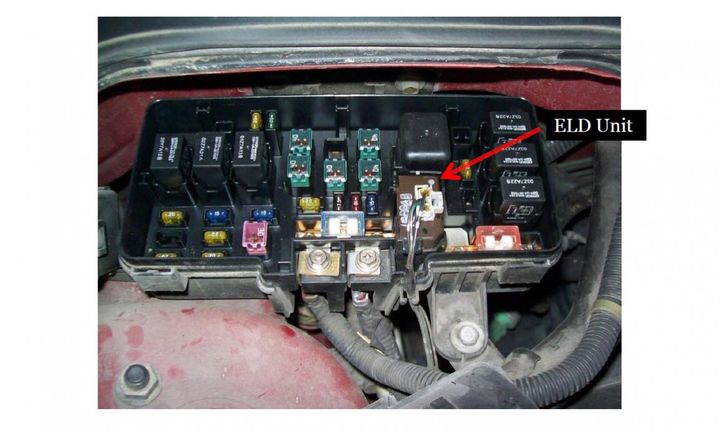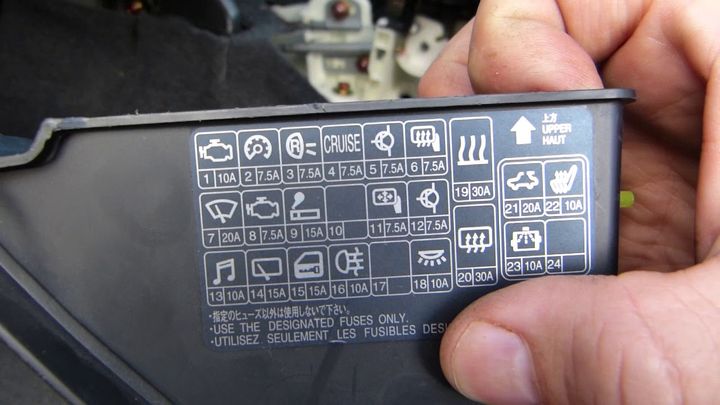


The ECU (Engine Control Unit) fuse is a critical component that safeguards your vehicle's engine control module from electrical damage caused by power surges or short circuits. In this comprehensive guide, we'll explore the meaning and importance of the ECU fuse, common symptoms of a blown fuse, and how to check and replace it to maintain optimal engine performance.

An ECU fuse, also known as an engine control module fuse, is a protective device designed to prevent excessive current from reaching and damaging the delicate electronic components of the engine control unit. The ECU manages crucial engine functions, including:
| Engine Function | Description |
|---|---|
| Fuel Injection | Regulates the amount and timing of fuel delivered to the engine |
| Ignition Timing | Controls the spark plug firing sequence for optimal combustion |
| Emission Control | Monitors and adjusts engine parameters to minimize harmful emissions |
The ECU fuse acts as a sacrificial component, melting and breaking the circuit when the current exceeds its rated amperage, thus protecting the engine control module from electrical overload.
The ECU fuse is typically located in the vehicle's fuse box, which can be found in one of two locations:
Under the hood
Beneath the dashboard
Consult your owner's manual for the precise location in your specific vehicle. The fuse is usually labeled as "ECU" or "Engine Control Module" for easy identification.
ECU fuses come in various amperage ratings, typically ranging from 10 to 30 amps, depending on the vehicle make and model. Ensuring the correct amperage rating is crucial for proper protection.
A blown ECU fuse can manifest through several symptoms that impact engine performance and drivability. Be on the lookout for these common signs:
Engine failing to start or stalling unexpectedly
Illumination of the check engine light on the dashboard
Reduced engine performance and activation of "limp mode"
If you experience any of these symptoms, it's essential to investigate the issue promptly to prevent further damage to your vehicle's electrical system.
If you suspect a blown ECU fuse, follow these steps to check and replace it:
Locate the fuse box and identify the ECU fuse using the fuse diagram or label.
Test the fuse for continuity using a multimeter set to the continuity or ohms setting.
If the fuse has blown, replace it with a new one of the same amperage rating.
When replacing the fuse, ensure a secure fit and avoid using a fuse with a higher or lower amperage rating, as this can lead to inadequate protection or premature fuse failure.
| Step | Action |
|---|---|
| 1 | Remove the blown fuse |
| 2 | Insert the new fuse of the correct amperage rating |
| 3 | Ensure a secure fit |
To minimize the risk of ECU fuse failure and protect your vehicle's engine control module, consider implementing these preventive measures:
Schedule regular electrical system inspections
Address any damaged wiring or connectors promptly
Avoid installing aftermarket electrical accessories that may strain the system
Maintain a clean and dry engine compartment to prevent corrosion
Install additional protection devices, such as voltage regulators or surge protectors, if necessary
While replacing a blown ECU fuse is a relatively straightforward process, certain situations warrant professional help:
Recurring fuse failure after replacement
Visible signs of wiring damage or corrosion
Persistent engine performance issues following fuse replacement
Uncertainty regarding the location or amperage rating of the ECU fuse
In these cases, consult a qualified mechanic or automotive electrician to diagnose and resolve the underlying problem.
The ECU fuse plays a vital role in protecting your vehicle's engine control module from electrical damage. By understanding its function, recognizing failure symptoms, and adhering to proper replacement procedures, you can ensure optimal engine performance and reliability. Regular maintenance and prompt attention to ECU fuse-related issues will help keep your vehicle running smoothly and prevent costly repairs in the long run.
The ECU fuse protects the engine control module from electrical damage caused by power surges or short circuits. It acts as a sacrificial component, breaking the circuit when the current exceeds its rated amperage.
The ECU fuse is typically located in the vehicle's fuse box, which can be found either under the hood or beneath the dashboard. Consult your owner's manual for the precise location in your specific vehicle.
ECU fuses come in various amperage ratings, typically ranging from 10 to 30 amps, depending on the vehicle make and model. It's crucial to use a fuse with the correct amperage rating for proper protection.
Common symptoms of a blown ECU fuse include the engine failing to start or stalling unexpectedly, illumination of the check engine light on the dashboard, and reduced engine performance with the activation of "limp mode."
To check if an ECU fuse has blown, locate the fuse box, identify the ECU fuse using the fuse diagram or label, and test the fuse for continuity using a multimeter set to the continuity or ohms setting.
If the ECU fuse keeps blowing after replacement, it may indicate a more serious issue, such as a wiring short circuit or a malfunctioning component. In this case, it's best to seek professional assistance from a qualified mechanic or automotive electrician.
Yes, using a fuse with a higher or lower amperage rating than specified can lead to inadequate protection or premature fuse failure. Always use a fuse with the correct amperage rating as recommended by the vehicle manufacturer.
To minimize the risk of ECU fuse failure, schedule regular electrical system inspections, address any damaged wiring or connectors promptly, avoid installing aftermarket electrical accessories that may strain the system, and maintain a clean and dry engine compartment to prevent corrosion.
You should seek professional assistance if you experience recurring fuse failure after replacement, notice visible signs of wiring damage or corrosion, have persistent engine performance issues following fuse replacement, or are uncertain about the location or amperage rating of the ECU fuse.
Maintaining the ECU fuse and addressing any related issues promptly can help prevent damage to the engine control module and other electrical components, ensuring optimal engine performance and reliability, and ultimately saving you from costly repairs in the long run.

Miguel started tinkering with car radios as a teenager, fascinated by the intricate dance of wires and circuits. This passion led him to pursue a career as an automotive electrician. For the past 10 years, Miguel has tackled everything from flickering headlights to mysterious electrical gremlins. He thrives on troubleshooting electrical problems and enjoys sharing his knowledge to empower car owners to understand their vehicles better.



